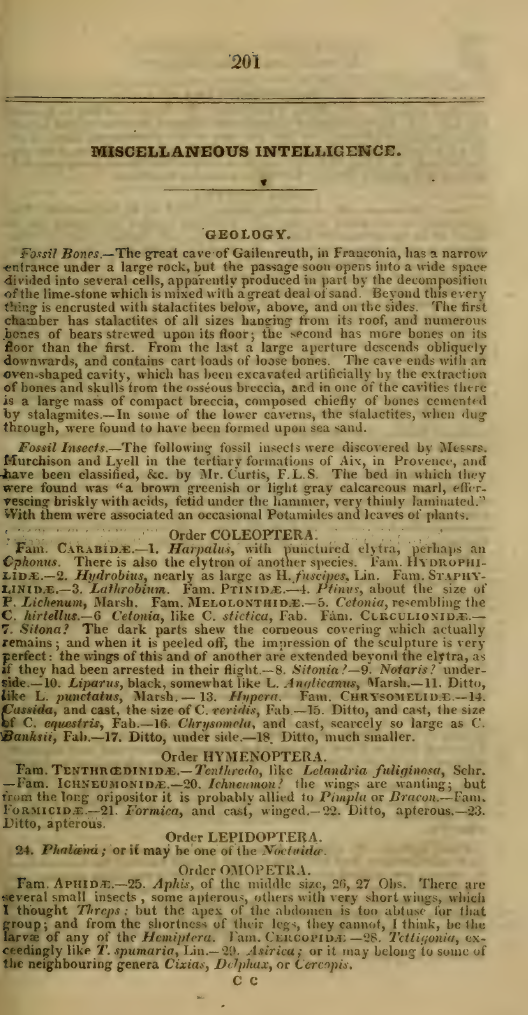Miscellaneous intelligence
DOI:
https://doi.org/10.21504/saqj.12.2640Keywords:
Geology, 19th-century botany, Historical Geography, 19th-century zoology, Great Cave of Gailenreuth, Franconia, Insect fossils -- France, Aix, Provence, Aix and Fuveau, Provence, Clavaria Muscoides, African explorationAbstract
This comprehensive report surveys significant geological and natural history discoveries presented during the early nineteenth century, focusing on fossil remains from Franconia and Provence, as well as contemporary developments in botany, zoology, and African geography. The Gailenreuth Cave in Franconia yielded remarkable accumulations of fossilised bear bones within limestone caverns encrusted by stalactites and osseous breccia, providing evidence of extensive Pleistocene faunal deposits. In southern France, Messrs. Murchison and Lyell identified exceptionally preserved fossil insects from the Tertiary marls of Aix, representing 47 distinct species across six Orders, alongside fossil shells and plants from Aix and Fuveau—collectively illustrating a richly diverse freshwater ecosystem.
Referencing M. Adolphe Brongniart’s seminal work on vegetable geological periods, the report situates these finds within a global chronological framework of plant evolution, from Carboniferous fern-dominated strata to Tertiary formations marked by modern dicotyledonous flora. Supplementary notes in botany record successful fungal preservation techniques, the botanical origin of rice paper, and updated plant enumeration (16,712 species in 2,409 genera). Zoological contributions include anthropological specimens from an extinct South American tribe and Mr Babbage’s proposed metric system for recording mammalian morphology.
The section on African geography outlines the contemporary state of exploration, noting well-documented northern regions (Egypt, Abyssinia, Nubia) and extensive uncharted interiors—particularly between the Congo and Zambezi basins and across the equatorial zone. Corrections to the courses of the Congo (Zair) and Orange Rivers refine continental mapping, underscoring both the progress and perils of exploration. Together, these contributions reflect the dynamic interdisciplinary spirit of early nineteenth-century natural philosophy—integrating geology, zoology, botany, and geography into a unified pursuit of empirical knowledge of the natural world.
Downloads

